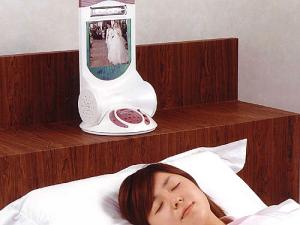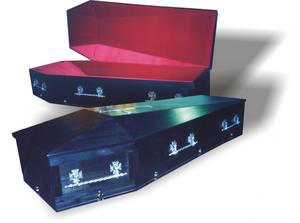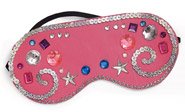What is a Retinal Tear or Detachment?
What is the Retina?
The retina is the layer of neurosensory tissue that lines the back, inside wall of the eye. If
you imagine that your eye is like a camera, then the retina is the film. When rays of light
enter the eye and are focused on the retina by the cornea and lens, the retina reacts. The
light receptive nerve cells that comprise the retina generate a nerve impulse whenever
they are exposed to light. The retina then sends these nerve impulses along the optic
nerve to the brain which interprets them as a picture. It's rather like the film in the camera
being developed so that pictures can be viewed. However, just like a picture cannot be
developed if the camera has defective film, vision is not possible in an eye with a defective
retina.
What are Retinal Tears?

Posterior Vitreous Detachment (PVD)
The back cavity of the inner eye is filled with clear jelly called vitreous . When the vitreous
jelly undergoes the natural aging process it deteriorates and becomes liquid. As the
eyeball moves, small pockets of liquid vitreous can move around as well inside the
vitreous cavity. This movement causes the vitreous to pull on the retina, causing flashing
(photopsia)
Normally the jelly is only loosely adherent to the retina and easily peels away
from the retina during vitreous degeneration
(syneresis). This event is called a posterior vitreous
detachment (PVD) and again is a normal event
occurring in most people sometime between 50 and
70 years of age.
However, occasionally, the vitreous jelly is so
adherent to the retina and pulls so hard on it that it
creates a tear. If this tear is along a blood vessel of
the retina this may cause bleeding into the vitreous
(called a vitreous hemorrhage) which could lead to a
shower of floaters which cloud the vision. Acute
retinal tears with or without flashes and floaters pose
a risk because fluid can enter through the tear under
the retina and lift the retina off, causing a retinal
detachment, much like damp wallpaper peeling from the wall. Since PVDs are usually the
initiating event of most retinal detachments, this is why PVDs are such a concern.

Retinal "Horseshoe" Tear

Horseshoe tear with retinal vessel involvement
Retinal tears may be sealed with lasers or cryotherapy (a freezing treatment), or both, to
prevent retinal detachment. These treatments are usually painless and seal the retina to the
wall of the eye. Both of these procedures create a scar to seal the retina to the back of the
eye. This prevents fluid from traveling through the tear and under the retina, and is
thought to be helpful in preventing a retinal detachment.
What is a Retinal Detachment?
A retinal tear is considered so serious because the vitreous liquid may leak through the
tear, and pool under the retina. Gradually, the build up of liquid separates the retina from
the wall of the eye, a condition called a Rhegmatogenous Retinal Detachment ( a retinal
detachment associated with a hole or break in the retina). Retinal Detachments are a
separation of the retinal tissue from the inside wall of the eye. Similar to wallpaper coming
lose from a wall, the retinal tissue may develop folds or come completely away from its
proper position along the interior of the eye resulting in loss of vision.


Retinal Detachments
What are the symptoms of Retinal Tears and Detachments?
Retinal tears and detachments generally offer the following painless symptoms:
New Floaters: The presence of some floaters is common because the vitreous is not
completely transparent or uniform in consistency. However, a sudden increase in the
number and size of floaters perceived in your vision is a warning sign that a retinal tear
could be in progress.

Simulated Floaters

Simulated Flashes
Flashes: The sudden appearance of flashes in vision may indicate that the vitreous material
is pulling away from or tugging on the retina, which could be the first stage of a retinal
tear or detachment.
Shadow or curtain over vision: The onset of a growing, dark shadow or the appearance of
a curtain being pulled over a portion of the vision in one eye is an indication of a retinal
detachment. These symptoms usually occur in the peripheral (side) vision. The growing
shadow results from the increasing area of retinal tissue being pulled away from the back
wall of the eye and no longer able to react to light.
Decreased vision: Another common symptom of a retinal tear or detachment is a sudden
decrease in vision.
Many people experience flashes or floaters and these are not necessarily a cause for alarm.
However if they are severe and seem to be getting worse, and/or you are losing vision
then you should see an ophthalmologist immediately. An eye examination with dilated
pupils will allow the determination of the source of your symptoms, as well as a
recommendation for the appropriate treatment. Prompt treatment can often minimize the
damage to your eye.
What is the treatment for a Retinal Detachment?
Retinal Surgery
The detachment of the retina from the back wall of the eye causes it to be removed from its
blood supply and therefore its source of nutrition. An untreated detachment will cause the
retina to degenerate and lose its ability to function, permanently in some cases. Retinal
surgery though offers hope and the chances of successfully restoring vision are
dramatically improved when intervention occurs as soon as possible following the onset
of symptoms.
Very small detachments of the retina can be surrounded by laser treatment, just like retinal
tears, to help limit their spread. Large retinal detachments, however, need to be repaired
surgically. The two major surgical treatments for retinal detachment are scleral buckling -
where a sponge or length of silicon plastic is placed on the outside of the eye and sewn in
place (the scleral buckle is very small and not visible after surgery), pushing the sclera
toward the tear in the retina - and pneumatic retinopexy, a less severe treatment where the
surgeon injects a gas bubble inside the vitreous cavity. The bubble pushes the retina
against the wall of the eye, allowing the tear to seal against the eye wall.
Vitreous Surgery
If the retinal detachment is too severe for scleral buckling or pneumatic retinopexy,
surgery to reattach the retina may be necessary. Under general anesthetic, the surgeon
removes the vitreous entirely, replacing it with air or a fluid compatible with the eye. Over
time, the fluid (or air) is absorbed, and replace with the eye's own fluid. Lack of vitreous
does not affect the patient's vision.
The success of these surgical techniques depends upon several factors including the size
and location of the damaged area of the retina, the length of time that elapses between the
onset of the tear or detachment and the surgery to repair the damage, and whether or not
other complicating factors are present. Many persons who have undergone retinal
reattachment surgery regain all of their previous vision, while some regain only functional
vision. Even in these latter instances, the treatment is usually effective in preventing further
damage to the retina and more vision loss.
All of these surgical techniques are done microscopically. We want to reassure you that
your surgeon does not take your eye out of its socket to operate on it. This is simply
impossible.
Risk factors
These conditions may be caused by a number of factors ranging from a physiological
weakness of the retina to a positive family history. The risk of spontaneous retinal tears
and detachments increase as we grow older. Nearsighted individuals are at an increased
risk for retinal tears and detachments. Persons who have had cataract surgery or have
experienced a blow to the head or injury to the eye are also at risk for retinal tears or
detachments. If you have had a retinal detachment in one eye, you are at increased risk of
developing one in the other eye. But there is only about a one in ten chance of this
happening. Retinal detachments do not happen as a result of straining your eyes, bending
or heavy lifting. Retinal detachments in general are quite uncommon however and only
about one person in ten thousand is affected.
Prevention of a Retinal Detachment
If your family has a history of retinal detachment, or your doctor determines that you are at
risk, it is important that you be familiar with the signs and symptoms of this condition and
that you have regular and complete eye examinations.
Awareness of the symptoms of a PVD is the critical first step in preventing a retinal
detachment. If you have new symptoms of a PVD (floaters, flashes, shower of spots) it is
important to have a prompt and very thorough examination of the retina and its periphery
to search for any retinal tears. If a retinal break can be discovered before a retinal
detachment develops it can be treated with the laser to seal the break and prevent a retinal
detachment. Fortunately the great majority of PVDs do not cause a retinal tear and not all
retinal tears will lead to a detachment. In general, though, if a tear is associated with a
symptomatic PVD it is at high risk for leading to a retinal detachment and should be
treated.
Link

 The World's Youngest Drummer
The World's Youngest Drummer
















